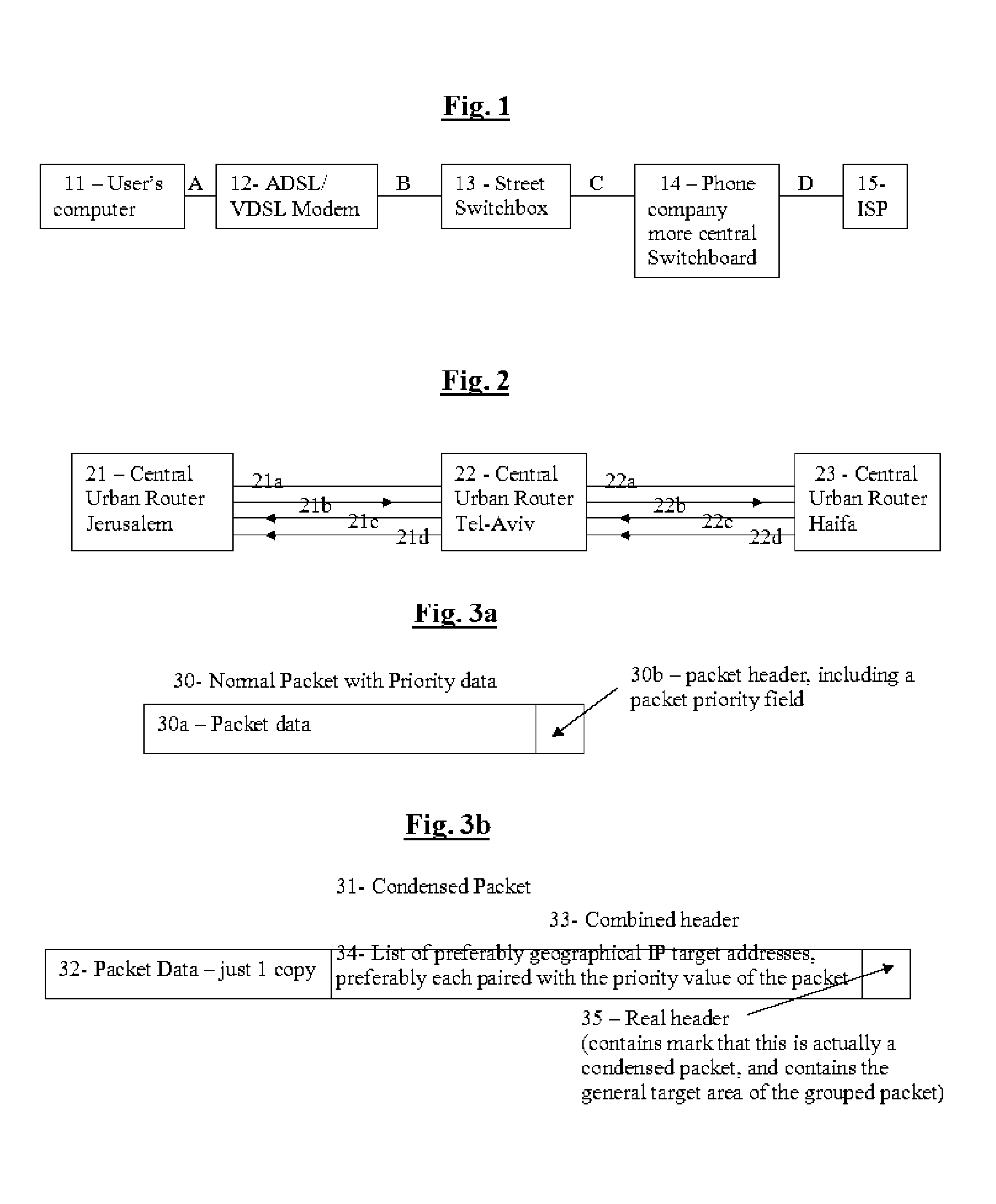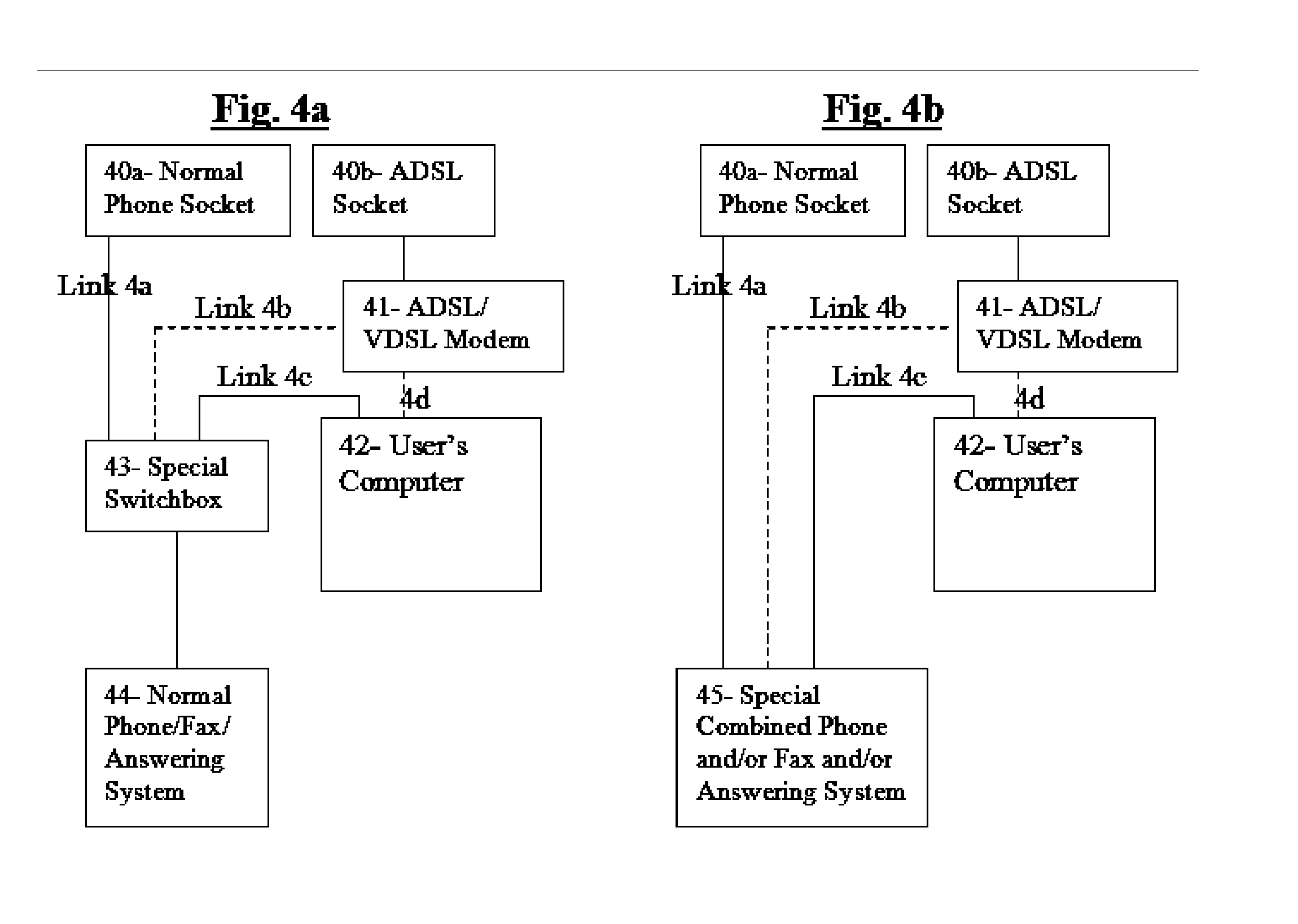System and method for improving the balance between download and upload traffic on the Internet and/or other networks.
a technology of download and upload traffic, applied in the field of system and method for improving the balance between download and upload traffic on the internet and/or other networks, can solve the problems of not the link between the user and the street switchbox, but the link further to the internet, and the inability to accommodate the changing ratios over the rest of the infrastructure,
- Summary
- Abstract
- Description
- Claims
- Application Information
AI Technical Summary
Benefits of technology
Problems solved by technology
Method used
Image
Examples
Embodiment Construction
[0028] All of the descriptions in this and other sections are intended to be illustrative examples and not limiting.
[0029] Referring to FIG. 1, I show an illustration of a typical configuration of connecting end users through ADSL or VDSL modems. As can be seen, typically the user's computer (11) is connected to an ADSL or VDSL modem (12) (typically thorough a network card or through a USB connection (A)), and the modem is connected through normal phone company copper wires (B) to a corresponding modem in a nearby street switchboard (13). The street switchboard can be connected to a more central switchboard of the phone company for example through better connections—such as for example broadband electrical lines or optical fibers (C), which can be for example two fibers for each line, or for example the same optical fibers are used for more than one line. The phone company's more central switchboard is then connected to the ISP, again for example through broadband electrical lines ...
PUM
 Login to View More
Login to View More Abstract
Description
Claims
Application Information
 Login to View More
Login to View More - Generate Ideas
- Intellectual Property
- Life Sciences
- Materials
- Tech Scout
- Unparalleled Data Quality
- Higher Quality Content
- 60% Fewer Hallucinations
Browse by: Latest US Patents, China's latest patents, Technical Efficacy Thesaurus, Application Domain, Technology Topic, Popular Technical Reports.
© 2025 PatSnap. All rights reserved.Legal|Privacy policy|Modern Slavery Act Transparency Statement|Sitemap|About US| Contact US: help@patsnap.com



